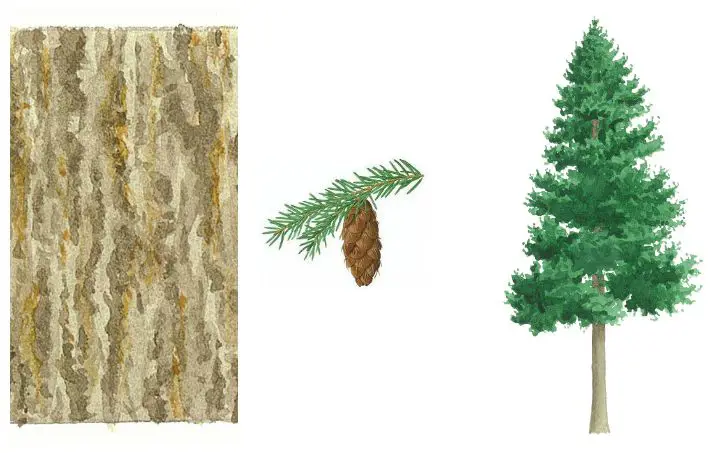Douglas fir
Douglas fir

The majestic Douglas fir is named after Scottish botanist and collector David Douglas. In 1827 he sent the first seed from North America back to Britain. Its botanical name - Pseudotsuga menziesii – pays homage to Archibald Menzies, who discovered the tree in 1791.
Facts and stats
- Lifespan: 500 years.
- Height: The Douglas fir can grow to be very tall indeed. It can grow up to 60 metres in Britain.
- Leaves: It has soft needles with two grey bands underneath.
- Seeds: The oval shaped cones hang downwards with a three point bract - a special type of leaf - on every scale.
- Bark: Douglas fir’s bark is a red-brown, fissured and corky.
- Native to: From British Columbia to California.
- Uses: The Douglas fir is the major timber species in its native North America. Its imported timber is sold here as ‘Oregon pine’. Originally grown in this country for ornamental purposes, it is now a valuable timber tree used for construction and paper pulp. It is also used in some furniture.
Famous Douglas fir trees in Scotland
Britain's tallest trees
Reelig Glen near Inverness is home to four of the tallest trees in the UK. The impressive Dughall Mor - Gaelic for 'big dark stranger' - held the record from 2005 until 2014. It was then beaten by an even taller neighbour at 66.4m.
Drumlanrig Douglas fir
Head to the Duke of Buccleuch’s Drumlanrig Estate and feast your eyes on one of the original firs David Douglas introduced back in 1827. The botanist’s brother worked on the estate as a clerk.
The Hermitage Douglas and the Dunkeld Douglas
Get two Douglas firs for the price of one at The Hermitage wood near Dunkeld. One of the trees is amongst the tallest in the UK, standing at 59 metres. The other, which stands next to nearby Dunkeld Cathedral, boasts a girth of seven metres.